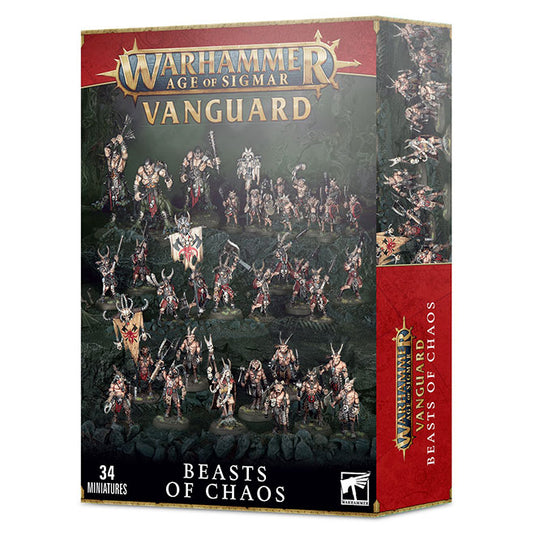


We will send you a notification as soon as this product is available again.
The Beasts of Chaos are twisted amalgamations of man and beast, filled with a burning desire to see the edifices of civilisation torn down and despoiled. Born from the primordial power of Chaos itself, these creatures gather in immense herds, stirring themselves to a frothing rage beneath looming, rune-scarred totems before loping forth in search of prey.
If you want nothing more than to bring ruin to the Mortal Realms, this box makes an ideal start for a Beasts of Chaos army – or an excellent expansion to any existing collection – and will save you money when compared with buying the kits individually. The set includes a mighty Great Bray-Shaman to lead your army, along with a selection of durable and hard-hitting Battleline units in the form of Gors, Bestigors, and Ungors, as well as hard-hitting Dragon Ogors with which to break through enemy lines. It’s a full army in one box, leaving you ready to crush foes in your games of Warhammer Age of Sigmar.
This set includes the following multipart plastic models:
– 1x Great Bray-Shaman
– 3x Dragon Ogors
– 10x Gors
– 10x Bestigors
– 10x Ungors, which can also be built as Ungor Raiders
All models are supplied with their appropriate bases.
These miniatures are supplied unpainted and require assembly – we recommend using Citadel Plastic Glue and Citadel Colour paints.
What are miniatures used for in tabletop games?
How do I paint my miniatures?
What materials are miniatures typically made from?
How can I start collecting miniatures?
Where can I buy miniatures?
What are some tips for assembling miniatures?
Can miniatures be used in different games?
How should I store and transport my miniatures?
Are there any beginner-friendly miniature painting tutorials?
